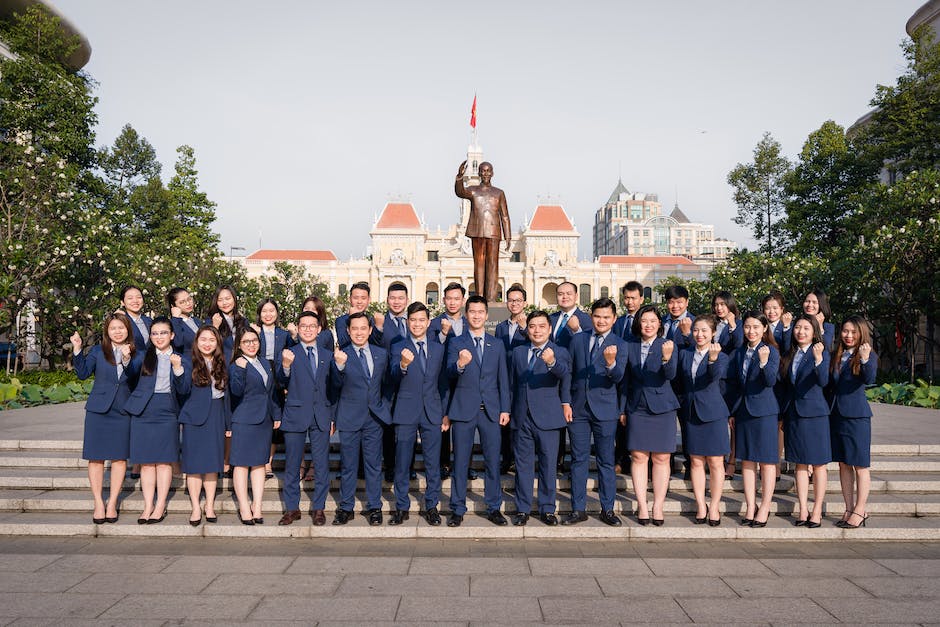Table of Contents
“Keeping your team happy and engaged for a successful 2022.”
Introduction
Introduction:
Employee retention is a critical aspect of any successful organization. In 2022, with the job market becoming increasingly competitive, it is more important than ever for companies to focus on effective employee retention strategies. By implementing strategies that prioritize employee satisfaction, engagement, and growth, organizations can reduce turnover rates and retain top talent. In this article, we will explore some key employee retention strategies that companies can adopt in 2022 to ensure a motivated and loyal workforce.
Flexible Work Arrangements
In today’s rapidly changing work environment, employee retention has become a top priority for organizations looking to maintain a competitive edge. With the rise of remote work and the increasing demand for flexibility, employers are seeking new strategies to keep their employees engaged and motivated. One effective approach that has gained popularity in recent years is the implementation of flexible work arrangements.
Flexible work arrangements allow employees to have more control over when and where they work, providing them with a better work-life balance and increasing job satisfaction. This can lead to higher levels of employee engagement, productivity, and ultimately, retention. In fact, a recent study found that 80% of employees would be more loyal to their employer if they had flexible work options.
One of the most common flexible work arrangements is telecommuting, which allows employees to work from home or another location outside of the office. This can be particularly appealing to employees who have long commutes or who prefer to work in a quiet, distraction-free environment. By offering telecommuting options, employers can attract and retain top talent who value flexibility in their work schedules.
Another popular flexible work arrangement is flextime, which allows employees to choose their own hours within a certain range. This can be especially beneficial for employees with family or personal commitments, as it allows them to work around their schedule. By giving employees the freedom to set their own hours, employers can create a more inclusive and supportive work environment that values work-life balance.
In addition to telecommuting and flextime, employers can also offer compressed workweeks, job sharing, and part-time options to accommodate employees’ diverse needs and preferences. By providing a variety of flexible work arrangements, employers can attract a wider range of talent and create a more inclusive and diverse workforce.
However, implementing flexible work arrangements successfully requires careful planning and communication. Employers must establish clear guidelines and expectations for remote work, including communication protocols, performance metrics, and availability. It is also important to provide employees with the necessary tools and resources to work effectively from home, such as technology, training, and support.
Furthermore, employers should regularly check in with remote employees to ensure they feel connected and engaged with the team. This can be done through virtual meetings, team-building activities, and regular feedback sessions. By maintaining open lines of communication and fostering a sense of belonging, employers can help remote employees feel valued and supported.
Overall, flexible work arrangements can be a powerful tool for improving employee retention in 2022. By offering employees more control over their work schedules and locations, employers can create a more engaged and motivated workforce. With careful planning and communication, organizations can successfully implement flexible work arrangements that benefit both employees and the company as a whole.
Professional Development Opportunities
In today’s competitive job market, employee retention has become a top priority for organizations looking to maintain a skilled and engaged workforce. One effective strategy for retaining employees is to provide professional development opportunities that allow them to grow and advance in their careers. By investing in the development of their employees, organizations can not only increase job satisfaction and loyalty but also attract top talent and stay ahead of the competition.
Professional development opportunities come in many forms, including training programs, workshops, seminars, conferences, and certifications. These opportunities can help employees acquire new skills, expand their knowledge, and stay current with industry trends. By offering these opportunities, organizations show their commitment to investing in their employees’ growth and development, which can boost morale and motivation.
One key benefit of providing professional development opportunities is that it can help employees feel more engaged and satisfied in their roles. When employees have the chance to learn and grow, they are more likely to feel valued and appreciated by their employer. This can lead to increased job satisfaction, higher levels of motivation, and a greater sense of loyalty to the organization.
Furthermore, professional development opportunities can also help employees advance in their careers. By acquiring new skills and knowledge, employees can position themselves for promotions, raises, and new opportunities within the organization. This can not only benefit the individual employee but also the organization as a whole, as it helps to build a strong and skilled workforce.
In addition to benefiting individual employees, professional development opportunities can also have a positive impact on the organization as a whole. By investing in the development of their employees, organizations can improve overall performance, productivity, and innovation. Employees who are continuously learning and growing are more likely to bring new ideas and perspectives to the table, which can help drive the organization forward.
To effectively implement professional development opportunities, organizations should take a strategic approach. This includes identifying the specific skills and knowledge that employees need to develop, as well as the most effective ways to deliver training and development programs. Organizations should also ensure that professional development opportunities are accessible to all employees, regardless of their role or level within the organization.
One effective way to provide professional development opportunities is to offer a mix of formal and informal learning experiences. Formal training programs, such as workshops and seminars, can provide employees with structured learning opportunities and help them acquire new skills and knowledge. Informal learning experiences, such as mentoring, coaching, and on-the-job training, can also be valuable for employees looking to develop their skills and advance in their careers.
In conclusion, professional development opportunities are a key strategy for retaining employees in 2022. By investing in the growth and development of their employees, organizations can increase job satisfaction, motivation, and loyalty, as well as attract top talent and stay ahead of the competition. By taking a strategic approach to providing professional development opportunities, organizations can create a culture of continuous learning and growth that benefits both individual employees and the organization as a whole.
Competitive Compensation and Benefits

In today’s competitive job market, retaining top talent is more important than ever for businesses looking to succeed. One of the key factors in employee retention is offering competitive compensation and benefits packages. In 2022, companies must stay ahead of the curve by implementing effective strategies to attract and retain top talent.
One of the most important aspects of a competitive compensation package is ensuring that employees are paid fairly for their work. This means conducting regular salary reviews to ensure that salaries are in line with industry standards and adjusting them as needed. Offering competitive salaries not only helps attract top talent but also encourages employees to stay with the company long-term.
In addition to competitive salaries, companies should also offer a comprehensive benefits package to employees. This can include health insurance, retirement plans, paid time off, and other perks such as gym memberships or flexible work arrangements. Providing a range of benefits shows employees that their well-being is a priority for the company and can help improve overall job satisfaction.
Another effective strategy for employee retention is offering opportunities for career advancement and professional development. Employees are more likely to stay with a company that offers opportunities for growth and advancement within the organization. This can include training programs, mentorship opportunities, and clear paths for career progression. By investing in their employees’ professional development, companies can show that they value their employees’ long-term success and are committed to helping them achieve their career goals.
Creating a positive work culture is also essential for employee retention. Employees are more likely to stay with a company where they feel valued, respected, and supported. This can include fostering a collaborative work environment, recognizing and rewarding employees for their hard work, and promoting a healthy work-life balance. By creating a positive work culture, companies can improve employee morale and job satisfaction, leading to higher retention rates.
Finally, companies should regularly solicit feedback from employees to understand their needs and concerns. This can include conducting employee surveys, holding regular one-on-one meetings, and creating open lines of communication between employees and management. By listening to employees’ feedback and addressing their concerns, companies can show that they value their employees’ opinions and are committed to creating a positive work environment.
In conclusion, implementing effective employee retention strategies is crucial for businesses looking to succeed in 2022. By offering competitive compensation and benefits packages, opportunities for career advancement, creating a positive work culture, and soliciting feedback from employees, companies can improve employee retention rates and attract top talent. Investing in employee retention not only benefits the company but also helps create a more engaged and motivated workforce.
Recognition and Rewards Programs
Employee retention is a critical aspect of any successful business. High turnover rates can be costly and disruptive to operations, leading to decreased productivity and morale among remaining staff. In today’s competitive job market, it is more important than ever for companies to implement effective strategies to retain their top talent. One such strategy that has been proven to be effective is the implementation of recognition and rewards programs.
Recognition and rewards programs are designed to acknowledge and incentivize employees for their hard work and dedication. By recognizing and rewarding employees for their contributions, companies can boost morale, increase job satisfaction, and ultimately improve retention rates. In fact, a study by Gallup found that employees who feel recognized are more engaged and productive, leading to higher levels of retention.
There are many different ways that companies can implement recognition and rewards programs. One common approach is to establish a formal recognition program that allows managers and peers to nominate employees for recognition based on specific criteria, such as outstanding performance, teamwork, or innovation. These programs can take many forms, from simple shout-outs in team meetings to formal awards ceremonies with prizes or bonuses.
Another effective strategy is to offer rewards for achieving specific goals or milestones. This could include bonuses, gift cards, extra time off, or other incentives that are meaningful to employees. By tying rewards to performance, companies can motivate employees to work towards common goals and objectives, while also showing appreciation for their efforts.
In addition to formal recognition and rewards programs, companies can also create a culture of appreciation and gratitude within the organization. This can be done through simple gestures such as thank-you notes, public praise, or small tokens of appreciation. By fostering a culture of recognition, companies can create a positive work environment where employees feel valued and appreciated for their contributions.
It is important for companies to regularly evaluate and update their recognition and rewards programs to ensure they remain effective. This could involve soliciting feedback from employees, tracking key metrics such as retention rates and employee engagement scores, and making adjustments as needed. By continuously improving and refining their programs, companies can ensure they are meeting the needs and expectations of their employees.
In conclusion, recognition and rewards programs are a valuable tool for companies looking to improve employee retention in 2022. By acknowledging and incentivizing employees for their hard work and dedication, companies can boost morale, increase job satisfaction, and ultimately improve retention rates. Whether through formal recognition programs, goal-based rewards, or a culture of appreciation, companies can create a positive work environment where employees feel valued and motivated to stay. By investing in effective employee retention strategies, companies can build a strong and engaged workforce that drives success and growth in the years to come.
Employee Wellness Initiatives
Employee retention is a critical aspect of any successful business. High turnover rates can be costly and disruptive to operations, leading to decreased productivity and morale among remaining staff. In today’s competitive job market, it is more important than ever for companies to prioritize employee retention strategies to attract and retain top talent. One effective way to do this is through employee wellness initiatives.
Employee wellness initiatives are programs designed to promote the physical, mental, and emotional well-being of employees. These initiatives can take many forms, from on-site fitness classes and healthy eating options to mental health resources and stress management workshops. By investing in the health and well-being of their employees, companies can create a positive work environment that fosters loyalty and engagement.
One key aspect of employee wellness initiatives is promoting work-life balance. In today’s fast-paced world, many employees struggle to juggle the demands of work and personal life. By offering flexible work schedules, remote work options, and paid time off, companies can help employees better manage their time and reduce stress. This, in turn, can lead to increased job satisfaction and loyalty among employees.
Another important component of employee wellness initiatives is promoting physical health. Many companies now offer on-site fitness centers, yoga classes, and healthy food options to encourage employees to prioritize their physical well-being. By making it easier for employees to stay active and eat well, companies can help reduce absenteeism, improve productivity, and boost morale.
In addition to physical health, mental health is also a crucial aspect of employee wellness. Many employees struggle with stress, anxiety, and other mental health issues that can impact their performance at work. By offering mental health resources such as counseling services, mindfulness workshops, and stress management programs, companies can support employees in maintaining their mental well-being. This can lead to reduced turnover rates, increased job satisfaction, and a more positive work environment overall.
Employee wellness initiatives can also include initiatives to promote emotional well-being. This can include team-building activities, recognition programs, and opportunities for personal development. By fostering a sense of community and belonging among employees, companies can create a supportive and inclusive work environment that encourages loyalty and engagement.
In conclusion, employee wellness initiatives are a valuable tool for companies looking to improve employee retention in 2022. By investing in the health and well-being of their employees, companies can create a positive work environment that fosters loyalty, engagement, and productivity. From promoting work-life balance to offering physical and mental health resources, there are many ways companies can support their employees in maintaining their overall well-being. By prioritizing employee wellness, companies can attract and retain top talent, reduce turnover rates, and create a more positive and productive work environment for all.
Strong Company Culture
In today’s competitive job market, retaining top talent is more important than ever for companies looking to maintain a strong workforce. One of the key factors in employee retention is a strong company culture. A positive company culture can help employees feel engaged, motivated, and valued, leading to higher job satisfaction and lower turnover rates.
One effective strategy for building a strong company culture is to focus on communication and transparency. Employees want to feel informed and involved in the decision-making process, so it’s important for companies to keep lines of communication open and be transparent about company goals, challenges, and successes. Regular team meetings, town halls, and feedback sessions can help foster a culture of open communication and collaboration.
Another important aspect of a strong company culture is employee recognition and appreciation. Employees who feel valued and appreciated are more likely to be engaged and motivated in their work. Recognizing employees for their hard work and contributions, whether through verbal praise, bonuses, or awards, can go a long way in boosting morale and fostering a positive work environment.
In addition to communication and recognition, offering opportunities for professional development and growth can also help build a strong company culture. Employees want to feel like they are growing and advancing in their careers, so providing training programs, mentorship opportunities, and career advancement paths can help employees feel invested in their work and committed to the company.
Creating a sense of community and belonging within the company is another important aspect of a strong company culture. Employees who feel connected to their colleagues and the company as a whole are more likely to be engaged and satisfied in their work. Hosting team-building activities, social events, and volunteer opportunities can help foster a sense of community and camaraderie among employees.
Finally, promoting work-life balance is essential for maintaining a strong company culture. Employees who feel overworked and burnt out are more likely to become disengaged and seek opportunities elsewhere. Encouraging employees to take time off, offering flexible work arrangements, and promoting a healthy work-life balance can help employees feel supported and valued, leading to higher job satisfaction and retention rates.
In conclusion, building a strong company culture is essential for effective employee retention in 2022. By focusing on communication, recognition, professional development, community, and work-life balance, companies can create a positive work environment where employees feel engaged, motivated, and valued. Investing in a strong company culture not only helps retain top talent but also contributes to overall company success and growth.
Mentorship and Coaching Programs
In today’s competitive job market, employee retention has become a top priority for organizations looking to maintain a skilled and engaged workforce. One effective strategy that has gained popularity in recent years is the implementation of mentorship and coaching programs. These programs not only help employees develop their skills and advance in their careers but also foster a sense of loyalty and commitment to the organization.
Mentorship programs pair experienced employees with newer hires or those looking to advance within the company. The mentor serves as a guide, providing advice, support, and feedback to help the mentee navigate their career path. This one-on-one relationship can be invaluable in helping employees feel supported and valued, leading to increased job satisfaction and retention.
Coaching programs, on the other hand, focus on developing specific skills or addressing performance issues. Coaches work with employees to set goals, identify areas for improvement, and create action plans to achieve success. By providing personalized support and guidance, coaching programs can help employees overcome challenges and reach their full potential.
One of the key benefits of mentorship and coaching programs is the opportunity for employees to receive feedback and guidance from someone outside of their immediate team or department. This fresh perspective can help employees see their strengths and weaknesses more clearly and provide new insights into how they can grow and develop in their roles.
Additionally, mentorship and coaching programs can help employees build valuable relationships within the organization. By connecting with more experienced colleagues or coaches, employees can expand their professional network, gain access to new opportunities, and feel more connected to the company as a whole.
To ensure the success of mentorship and coaching programs, organizations must invest in training for mentors and coaches. These individuals need to have the skills and knowledge to effectively support and guide their mentees or employees. Providing ongoing support and resources for mentors and coaches can help them build strong relationships with their mentees and employees and ensure the success of the program.
It’s also important for organizations to regularly evaluate and assess the effectiveness of their mentorship and coaching programs. Gathering feedback from participants, tracking key metrics such as retention rates and employee satisfaction, and making adjustments as needed can help organizations continuously improve their programs and maximize their impact on employee retention.
In conclusion, mentorship and coaching programs are valuable tools for organizations looking to improve employee retention in 2022. By providing employees with personalized support, guidance, and feedback, these programs can help employees develop their skills, advance in their careers, and feel more connected to the organization. Investing in training for mentors and coaches, evaluating program effectiveness, and making adjustments as needed are key steps to ensuring the success of these programs. By implementing effective mentorship and coaching programs, organizations can create a more engaged and loyal workforce that is better equipped to meet the challenges of today’s competitive business environment.
Transparent Communication Channels
In today’s competitive job market, retaining top talent is crucial for the success of any organization. One key factor in employee retention is transparent communication channels. When employees feel informed and engaged, they are more likely to stay with their current employer. In this article, we will explore the importance of transparent communication in employee retention and discuss effective strategies for implementing it in 2022.
Transparent communication is essential for building trust and fostering a positive work environment. When employees feel that they are kept in the loop about company news, changes, and decisions, they are more likely to feel valued and respected. This, in turn, leads to higher job satisfaction and lower turnover rates. In fact, a study by Gallup found that employees who feel that their opinions are heard at work are 4.6 times more likely to feel empowered to perform their best work.
One effective strategy for implementing transparent communication channels is to hold regular town hall meetings or all-hands meetings. These meetings provide an opportunity for leadership to share important updates and information with employees, as well as for employees to ask questions and provide feedback. By creating a forum for open dialogue, organizations can ensure that everyone is on the same page and working towards common goals.
Another important aspect of transparent communication is providing regular feedback to employees. This can take the form of performance reviews, one-on-one meetings, or informal check-ins. By giving employees constructive feedback on their work, as well as recognizing their achievements, organizations can show that they value their employees’ contributions and are invested in their growth and development.
In addition to regular feedback, organizations can also use technology to facilitate transparent communication. Tools such as Slack, Microsoft Teams, and Zoom make it easy for employees to stay connected and informed, regardless of their location. By leveraging these tools, organizations can ensure that employees have access to the information they need to do their jobs effectively and feel connected to their colleagues and the broader organization.
Finally, it is important for organizations to be transparent about their values, mission, and goals. When employees understand the bigger picture and how their work contributes to the overall success of the organization, they are more likely to feel engaged and motivated. By clearly communicating the organization’s purpose and vision, leaders can inspire employees to do their best work and stay committed to the organization long-term.
In conclusion, transparent communication is a key driver of employee retention in 2022. By creating open channels for dialogue, providing regular feedback, leveraging technology, and communicating organizational values, leaders can build trust, foster engagement, and ultimately retain top talent. In today’s fast-paced and ever-changing business environment, organizations that prioritize transparent communication will have a competitive advantage in attracting and retaining the best employees.
Q&A
1. What are some effective employee retention strategies for 2022?
Implement flexible work arrangements, offer competitive compensation and benefits, provide opportunities for career development, foster a positive work culture, and prioritize employee well-being.
2. How can companies improve employee retention in 2022?
Invest in employee training and development, create a supportive work environment, recognize and reward employee contributions, and solicit feedback from employees to address any concerns.
3. Why is employee retention important for businesses in 2022?
High employee turnover can be costly and disruptive to business operations. Retaining top talent can lead to increased productivity, higher morale, and better overall performance.
4. What role does company culture play in employee retention?
A positive company culture can help attract and retain employees by creating a sense of belonging, fostering collaboration, and promoting a healthy work-life balance.
5. How can companies address burnout and improve employee well-being in 2022?
Offering mental health resources, promoting work-life balance, encouraging breaks and time off, and providing support for employees experiencing burnout can help improve employee well-being and retention.
6. What are some ways to promote career development and growth for employees in 2022?
Offering training programs, mentorship opportunities, and clear paths for advancement can help employees feel valued and invested in their professional growth within the company.
7. How can companies use feedback to improve employee retention?
Regularly soliciting feedback from employees through surveys, one-on-one meetings, and open communication channels can help identify areas for improvement and address any concerns that may be impacting retention.
8. What are some innovative employee retention strategies for 2022?
Implementing personalized development plans, offering sabbaticals or extended time off, providing opportunities for remote work or flexible scheduling, and creating a strong employer brand can help attract and retain top talent in 2022.
Conclusion
In conclusion, implementing effective employee retention strategies in 2022 is crucial for organizations to retain top talent, increase employee satisfaction, and ultimately improve overall business performance. By focusing on factors such as competitive compensation, career development opportunities, work-life balance, and a positive company culture, employers can create a supportive and engaging work environment that encourages employees to stay with the organization long-term. Investing in employee retention strategies not only reduces turnover costs but also helps to build a strong and loyal workforce that drives success in the long run.





